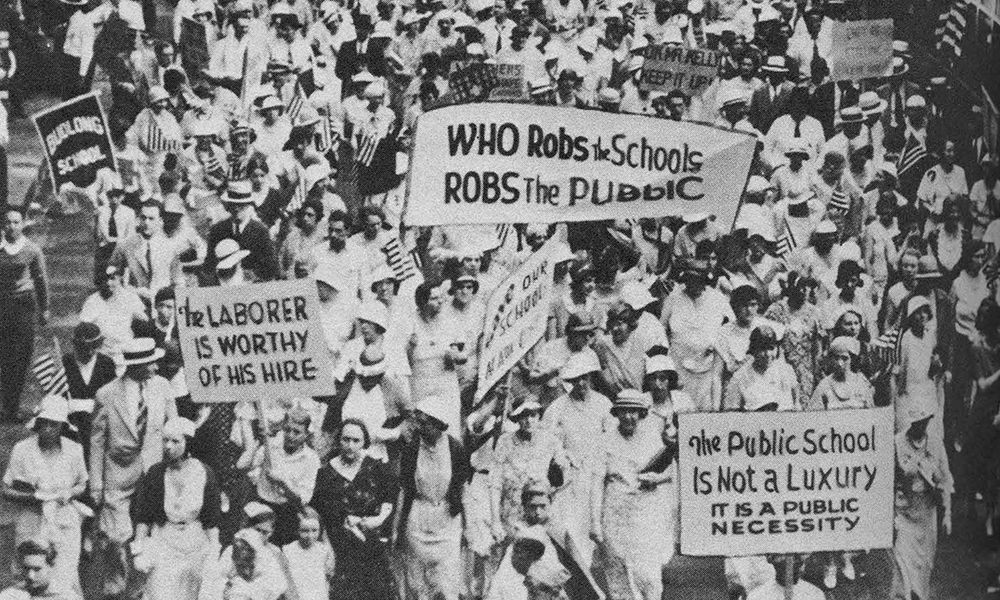
Crowds of teachers striking in the 1930s for higher pay amid abhorrent working conditions (Tweedy, n.d.).
Inspired by the Volunteer Emergency Committee's militant strikes, the CTU formed from an amalgamation of teachers’ unions amidst the deprivations of the Great Depression, bridging what separated teachers before.
There was “an endemic series of strikes, demonstrations and disorder in protest to the delay in the payment of teachers’ salaries (Chicago Daily News reporter as qtd in Lyons, 2008).”
By the 1930s, teachers were exasperated with their non-militant union leaders and low, inconsistent pay from the Board of Education. The militant strikes started in 1933, when janitors got a secret raise while teachers received another cut. Schoolteacher John Fewkes founded the Volunteer Emergency Committee (VEC) to strike against teachers’ underpayment, unbothered by other teachers’ unions’ “professionalism.” The VEC gathered attention and support from students and the public, communicating through mass demonstrations and boycotts, (Lyons, 2008) even raiding tax-dodging banks once (“The Chicago Teacher Revolt Of 1933,” 2012).
“Pay us! Pay us!” (Chicago teachers, 1933, as qtd in “The Chicago Teacher Revolt Of 1933,” 2012)
The banks didn’t appreciate their gesture, saying “To hell
with the troublemakers!” (Gen. Dawe as qtd in “Chicago Schools May Be Closed May 12; 5,000 Teachers Besiege Five Loop Banks,” 1933)
“Parading may be looked upon as unethical for members of our profession… But we found it the only effective means of dealing with the local situation. We intend to continue these demonstrations until our teachers are paid in full (Fewkes as qtd in Lyons, 2008).”
The VEC’s strikes paid off when teachers got paid in 1934, a feat that the “professional” teachers’ unions couldn’t achieve (Lyons, 2008).
“One of the greatest contributions that the VEC has made to the teachers of Chicago has been to demonstrate the power that they can exert when unified in any common task (Fewkes as qtd in Lyons, 2008),”
The VEC’s demonstrations not only gained back pay but also inspired the unions to overcome previous boundaries (gender, pay, etc.) and reject professionalism, creating a union that communicated well within itself and to others. In 1937, their efforts became clear (“CTU History,” n.d.) when most of Chicago’s teachers’ unions merged into one striking union: the Chicago Teachers Union. Although some “professional” teachers and public figures disliked their militant ways, the CTU has persisted to this day (Lyons, 2008).
“... there are things I won’t forget easily… Few of us are the sweet, complacent, non-thinking 100 percenters that we
used to be. Our eyes have been opened… After four years of learning that bankers are our worst enemies, that politicians are interested in votes and power only and use the city’s children merely as pawns in their selfish game, that we can depend on no one but ourselves, we cannot be restored to
our previous complacency (Smith, 1934, as qtd in “The
Chicago Teacher Revolt of 1933”, 2012).”
“This, to anyone even slightly familiar with the usual character and demeanor of the average American teacher, was indeed something new under the sun (Levitt as qtd Lyons, 2008),”
By breaking the mold and boldly striking against unfair conditions in 1933 (Lyons, 2008), the CTU inspired teachers’ communication and educational reform across America.